by Wallace Wyss –
Title: The Art of the Classic Sports Car Pace and Grace
Author: Stuart Codling
Photography: James Mann
Publisher: MBI
Hardcover: 208 pages
Publisher: Motorbooks (June 1, 2017)
Language: English
ISBN-10: 076035216X
ISBN-13: 978-0760352168
Product Dimensions: 10.1 x 0.9 x 12.4 inches
Price: $32.20 – on Amazon – click here
There is no philosophizing here on what a sports car is. Oh there is a brief attempt at the beginning, something about open car cars and then inexplicably he includes some with fixed roofs.
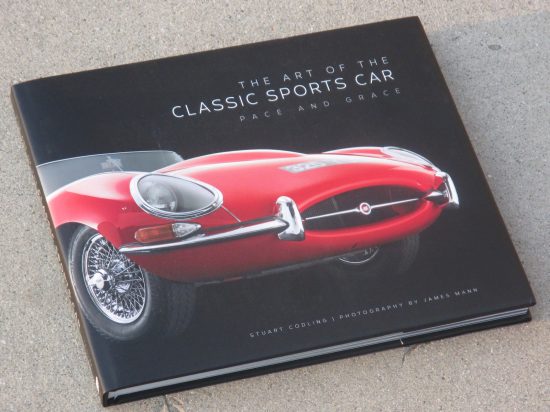
You get the feeling that the author, who has written for many car magazines including Englands’s CAR, Autosport and Autocar, just chose what he thought looked the part.
Although the photographs are world class in terms of their lighting (with a no-nonsense solid black background) there seems to be no rhyme or reason why this car or that one was included. They don’t go together other than offering sporting driving. For example right near a Ferrari 250GT California Spyder, which is worth today about $7 mllion if a penny, there’s a Datsun 240Z coupe. To me it demeans the choosing of what a classic sports car is if he mixes and matches cars of such wide variance in intent (the Ferrari was built for the elite and the rich while the 240Z was a beginner’s sports car that sold new for $3,000). So I think the author and photographer mis-matched their profile of the customer at the outset, because no one I know who likes Ferraris or 300SL roadsters or the Maserati 300S would want to buy a book featuring those elite cars if the book also devotes space to the Datsun 240Z.
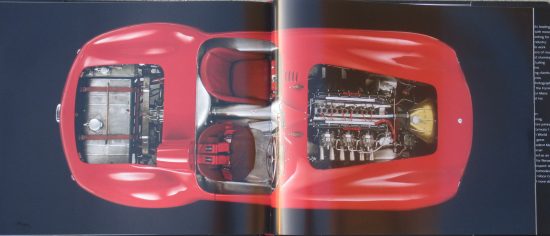

I am not condemning the inclusion of the 240Z because it is Japanese; there is another Japanese car in the book, the Toyota 2000GT (actually made by Yamaha) which deserves to be in the book because it is so rare (around 50 built) and was very pricey at the time, and is virtually hand made. I’m just saying you don’t go to a gourmet restaurant and expect to find McDonald’s offerings on the menu along with the filet mignon!
On the other hand, for the photographs alone, I have to say that Britisher Stuart Codling did an imaginative job, especially by including several aerial POV shots.
Now you might say “What good is that—we never see a car we own from that view?” but I say that’s precisely my point, we want to see if the aerial view has anything to do with its enduring appeal and his shots prove they do indeed, the most classic ones among them having great top views. I got a kick out of the XKSS Jaguar, essentially a D-type kitted out for the road, having a luggage rack with a bit of luggage on it, as if it were a practical car to take a weekend trip in!
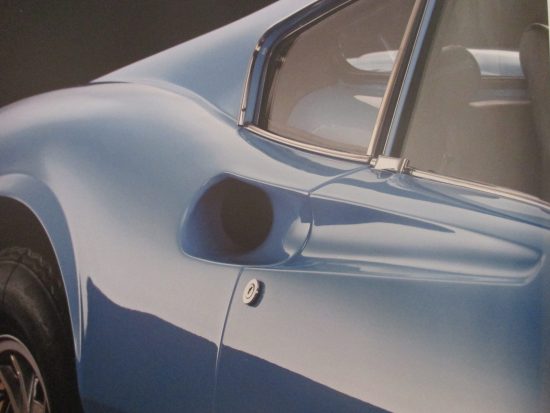
The well lit engine shots of stock engines are indeed informative, but then you run into another problem of mixing classes as it were, because in the cheaper cars, their engine compartments weren’t designed to be well finished and ever be objects d’art in themselves so they look rather crude. It is like sending Architectural Digest to photograph a 1950 2 bedroom tract house, a waste of effort.
Reminds me of my problem with the stock De Tomaso Pantera; it had an ugly engine compartment with cheap looking components, and black gook all over hell, so the only way to make the compartment look good is to add chrome but then you’re deviating from original. Some cars were made for the mass market and never intended to have the spotlight thrown on the engine.
In most cases there are several views of the car but I was miffed at the Aston Martin convertible not having an interior shot. Since the Royal Family of England has such a car I wanted to “enjoy” the interior vicariously while they chose not to include an interior.
The decision to shoot against a solid coal black background was good in one way, it totally focuses you on the car. But I don’t know, call me Mr. Nostalgia, I would have liked to see the cars photographed against scenery where you’d like to drive such a car, the Porsche 356 Speedster in the Alps, The Sunbeam Tiger next to a racetrack, etc.
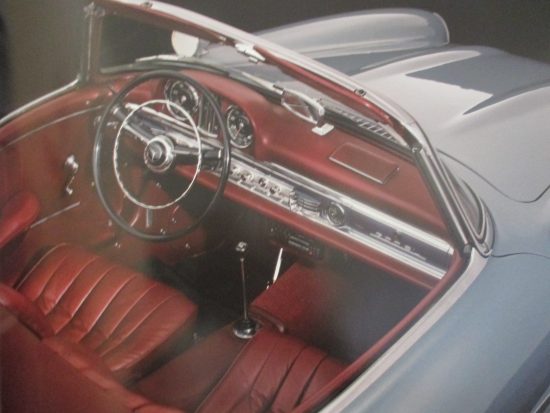
And so it is, I am only half satisfied. I am recommending the book for an excellent source of pictures of cars that are mostly original (I am suspicious of the road lamps on the Sunbeam Tiger) and, if you can enjoy cars shot against a blacker than black background, go for it.
But I think the publishers of this type of book need to ask more before giving the green light to such a book: “Who is your customer and what do they want?” or even more specifically “Will there be any buyers who are alienated by the choice of cars you have made?”
Let us know what you think in the Comments.
THE AUTHOR: Wallace Wyss is the author of 18 car books. He currently is engaged in making oil portraits of his favorite sports cars. For a list of available prints, write Photojournalistpro2@gmail.com.
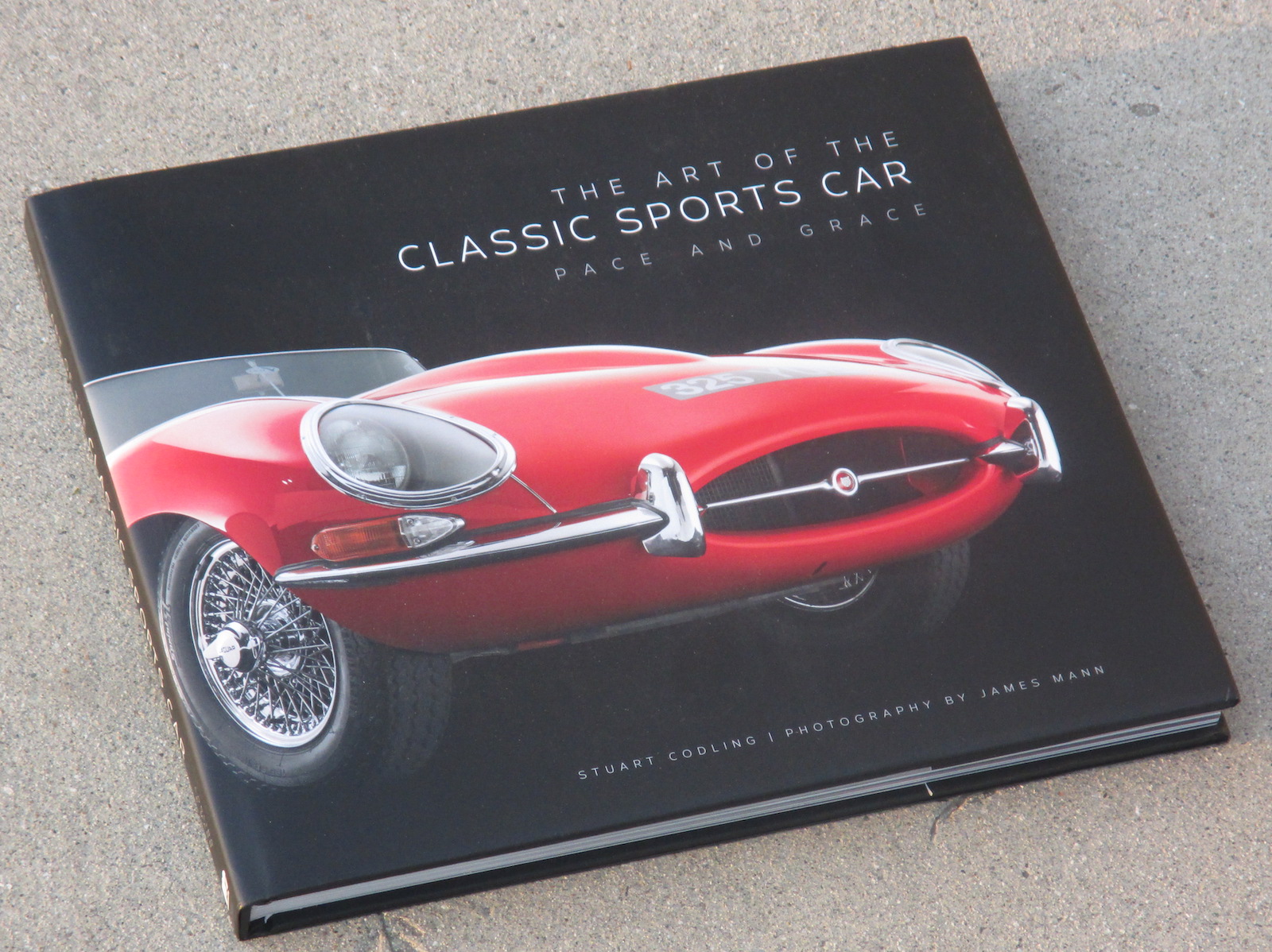

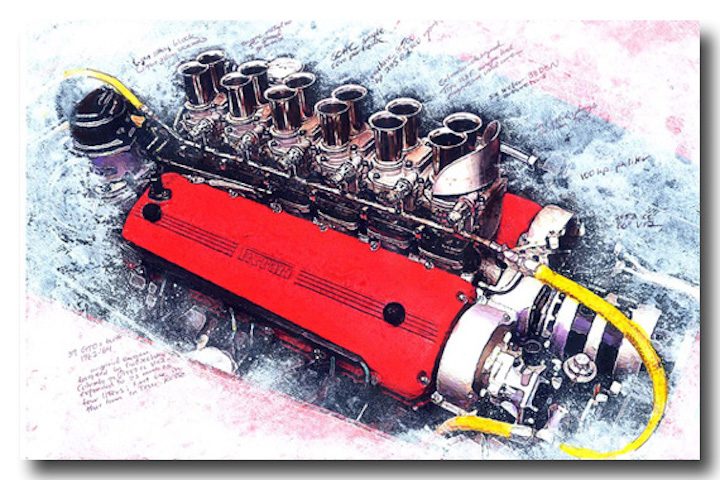

Speak Your Mind